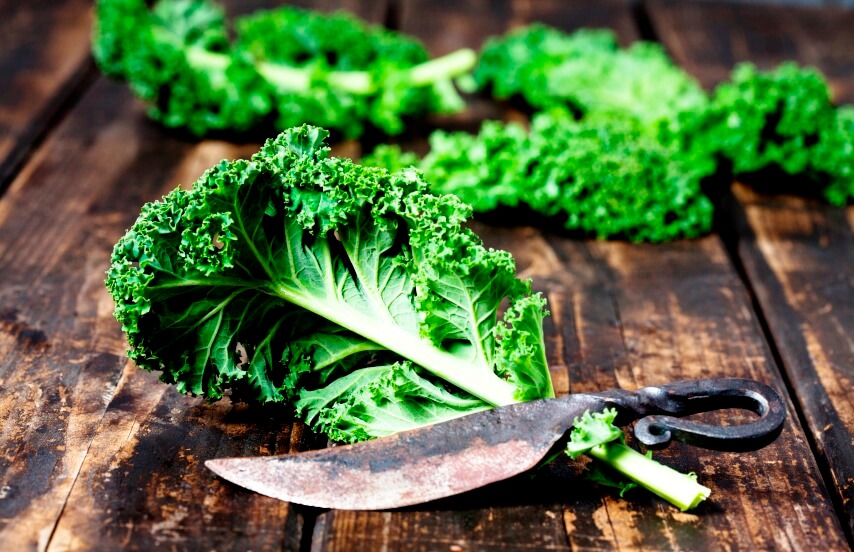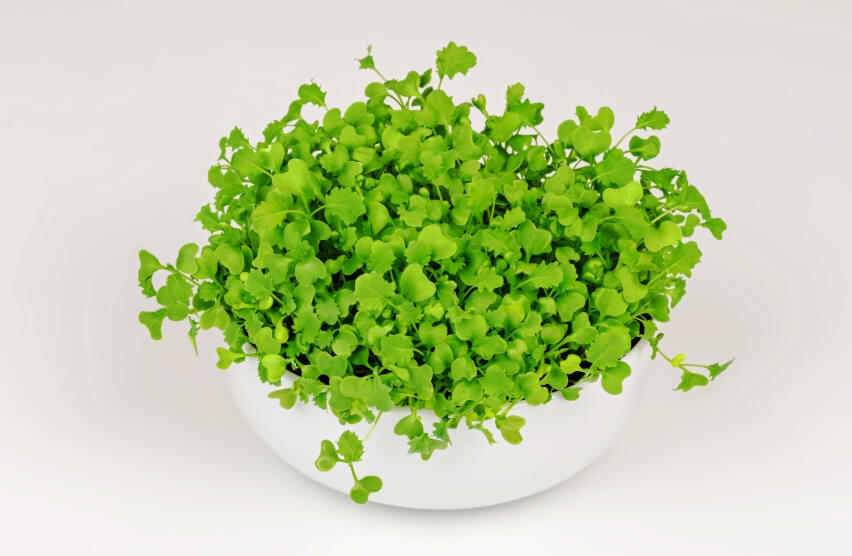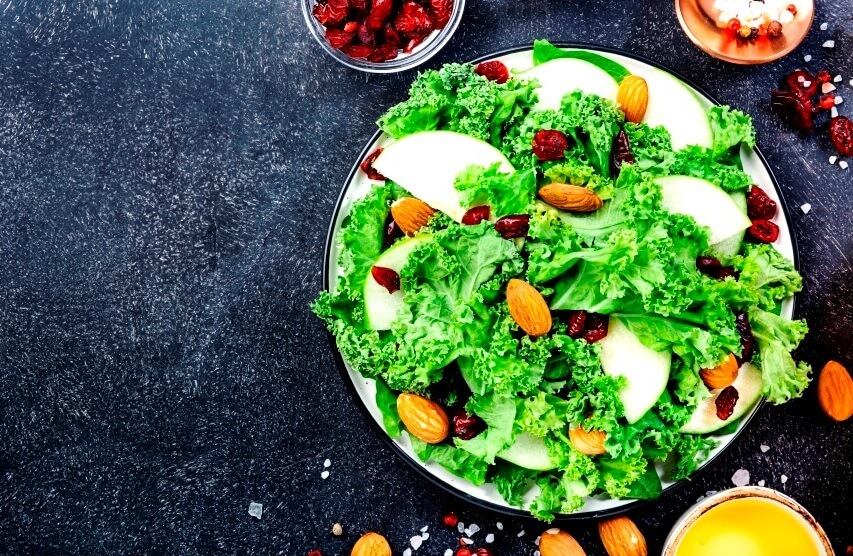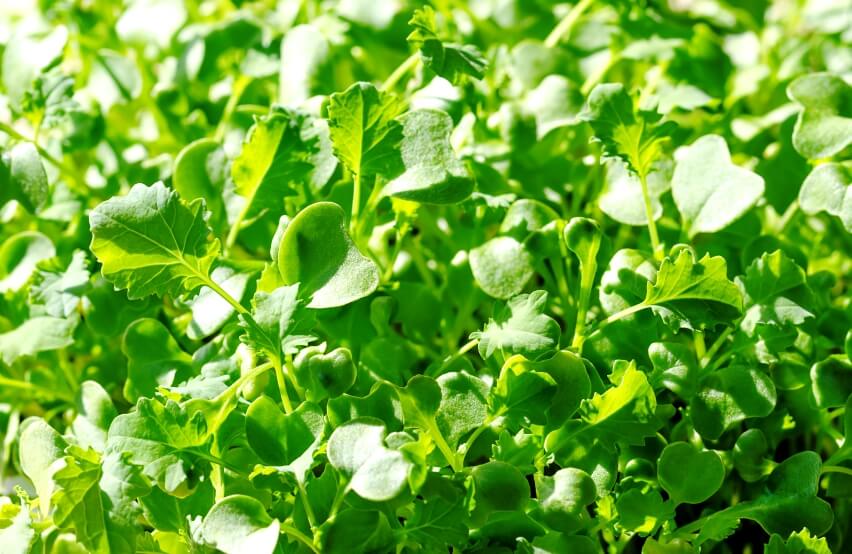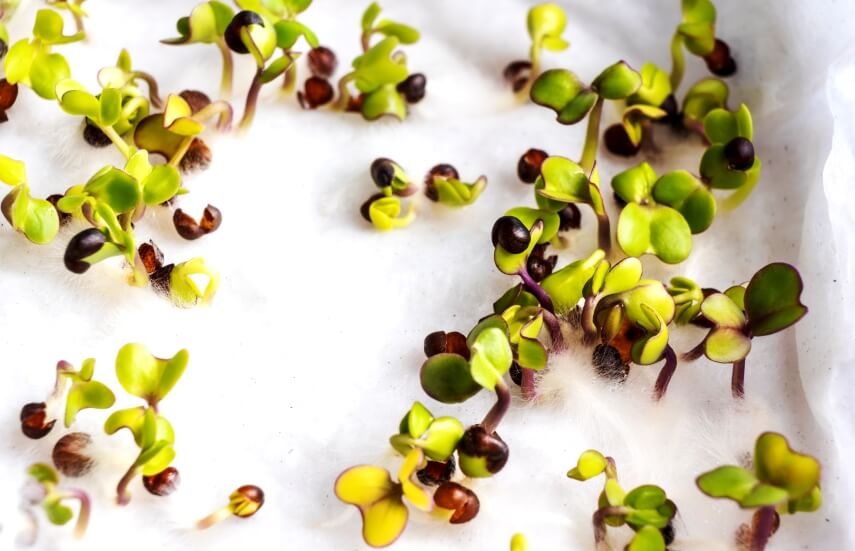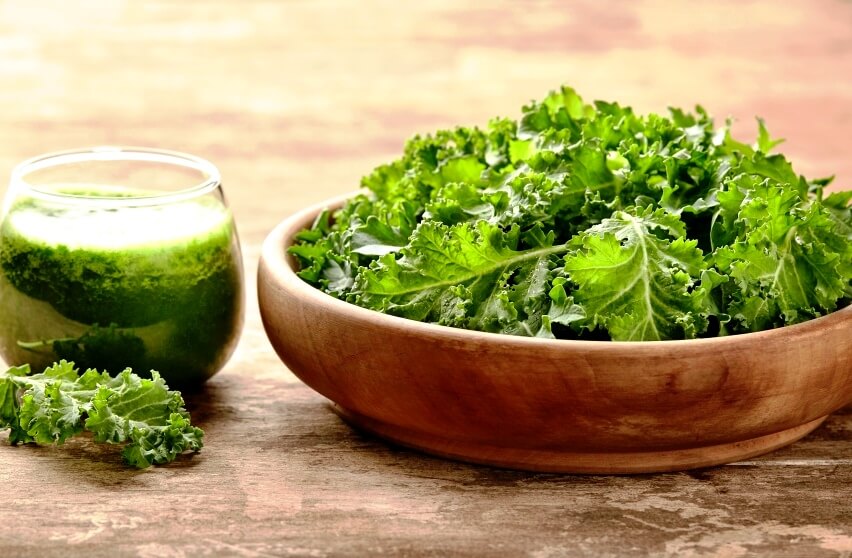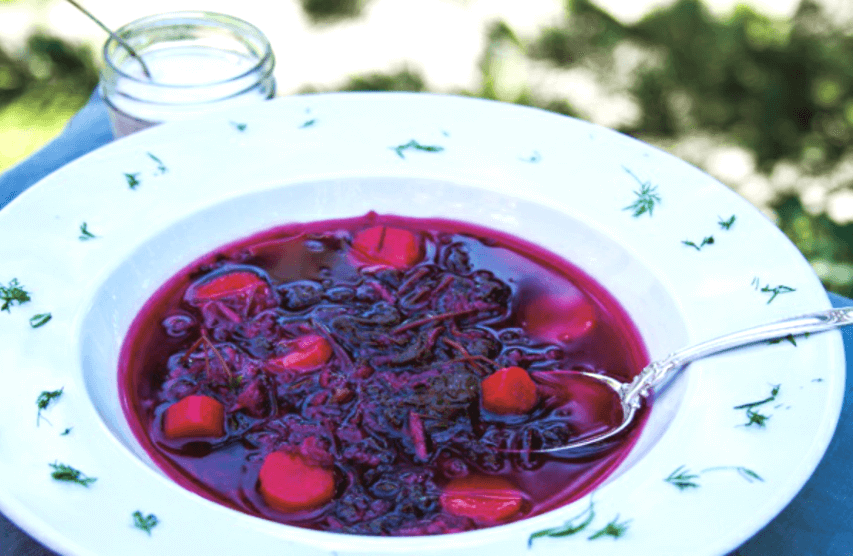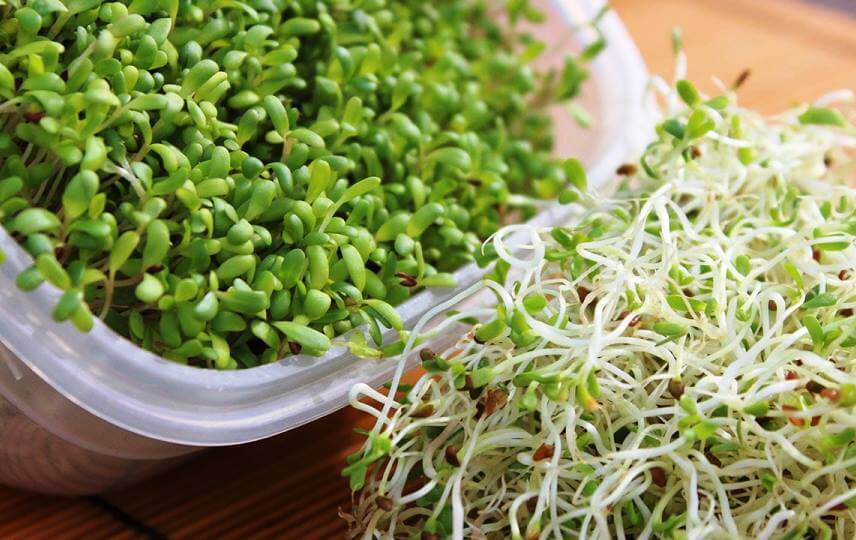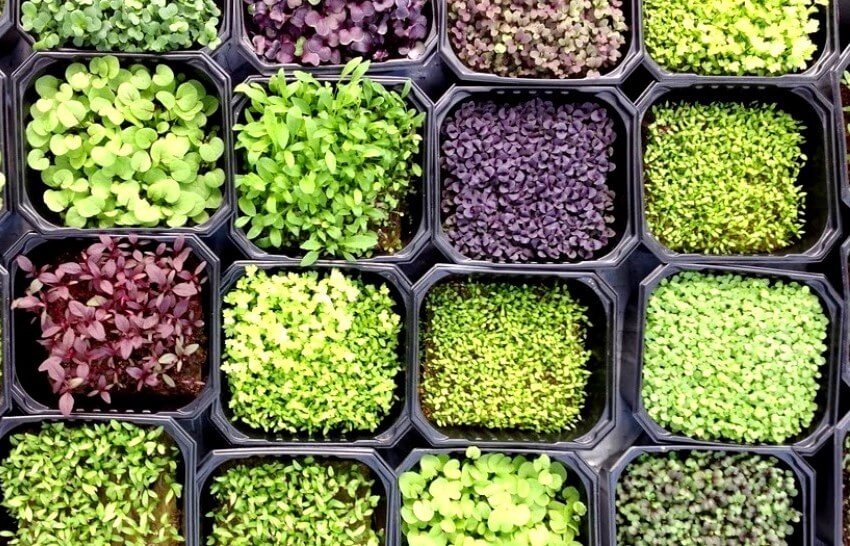One cup of kale has 684 percent of the recommended daily intake of vitamin K, 206 percent of the recommended daily intake of vitamin A, and 134 percent of the recommended daily intake of vitamin C for an average adult. That is why some people call kale the queen of greens [1].
One of the most nutrient-dense superfoods on the planet is kale microgreen! They are low in calories and offer several health advantages. Kale microgreens contain four times as much nutrition as the full-grown form of kale.
If Like to know more about microgreens, check these articles:
<<What Are Microgreens >> and <<Microgreens Benefits for Skin>>
Kale microgreen varieties
Kale microgreens come in various varieties. The two most popular varieties are Red Russian Kale, which has plain-leaf and reddish/purple stems, and Scotch Kale, which has curly, green leaves and a white stem.
Kale History
This green crop, which was formerly a staple of post-World War II victory gardens, has recently become more popular due to its recently discovered nutritional value. Kale is now the star of the menu in five-star restaurants, on culinary shows, and in the food sections of journals and newspapers. You can eat it fresh or cooked.
Kale is a member of the cabbage family. It is in the same family as collards, broccoli, and cauliflower. It has been cultivated for a very long time and is said to have originated in the eastern Mediterranean. Since at least 2000 BCE, people have benefited from the health benefits of kale, which has long been a favorite vegetable in North America and Europe [2].
Kale microgreens overview
| Family | Brassicaceae |
| Recommended Varieties | Scotch kale, Red Russian Kale |
| Nutrition | Vitamin A, C, K1, and B6, potassium, calcium, magnesium, copper, and manganese |
| Average days to germinate | 2 to 3 days |
| Average days to harvest (after germination) | 6 to 9 days |
| Difficulty | Easy |
Nutrition and health benefits
Kale is renowned for its numerous health advantages and beneficial nutrients. Along with minerals, fiber, antioxidants, potassium, calcium, magnesium, copper, and manganese, it also has vitamins A, C, K1, and B6. Kale microgreens can boost your health in a variety of ways [3]:
Prevent Cancer
Micro kale contains a lot of glucosinolates. According to research, the metabolites in glucosinolate are very effective in preventing cancer growth. It is because these tiny substances can activate phase 2 detoxification enzymes, which aid in the body’s removal of carcinogens.
Boost Immune System
kale microgreens contain a significant amount of vitamin C. This vitamin encourages the formation of collagen. Collagen strengthens your immune system while enhancing the texture and appearance of your skin.
Reduce Cardiovascular Risk
Kale microgreens are known to contain significant levels of polyphenols that lower your chance of developing heart disease and other heart-related issues. This is a fantastic natural choice for lowering your risk of cardiac issues, including heart attacks and strokes. Even blood pressure can be lowered with its assistance.
Improve Eye Health
Kale microgreens include carotene, which is believed to assist in safeguarding the cells in your eyes. This can halt cellular deterioration, which frequently occurs as people get older. In essence, consuming kale microgreens can help keep your eyesight for longer.
How to grow kale microgreens
It takes 2 to 3 days for the kale to germinate. You can harvest them almost ten days after planting them. The procedure of growing kale microgreens is almost similar to other microgreens. Read the <<Growing Microgreens >> article to learn more about the general method for growing microgreens.
Kale microgreens Growing Tips
Growing tips
- scatter your seeds over the top of the growth media; a 10 x 20-inch microgreen tray should require about 1.25 ounces of seeds
- Bottom water to lessen the chance of mold growth and foul odor.
Harvesting Tips
- Your kale microgreens should be ready to harvest ten days after sowing.
- You can allow them to mature into the true leaf stage, which is in between the microgreen and baby green stages.
- Cut the kale micros close to the soil to highlight the brilliant stem.
kale microgreen seeds sprouting
Washing Tips
- To avoid having to conduct additional washing, be sure to cut the stem slightly above the level of the growing material. Washing microgreen can significantly shorten their shelf life and take up much of your time.
Storing tips
- It is better to harvest kale microgreens when you need and consume them fresh.
- Ensure that your kale micros are totally dry before storing them in your refrigerator in a sealed container. Kale microgreens can last at least a week.
CULINARY guide
The flavor of kale is rich, earthy, and nutty. Although the leaves can be fairly bitter when eaten raw, there are many other ways to enjoy this vegetable!
Kale microgreens make an excellent addition to salads. Kale is frequently blended with broccoli and cabbage micros to create a salad mix with bite and contrasting hues. Combine it with your salad along with the oil, vinegar, and nuts. It works wonderfully together!
Kale also makes a fantastic addition to smoothies. Thanks to this microgreen, your drinks become considerably healthier and have a more fabulous flavor!
Kale can also be cooked and added to soups. We will go over a fantastic borsht recipe for kale microgreens in the following paragraphs [1]:
Kale microgreen Borscht recipe
This light version of borscht is an excellent way to start a family meal or a quick lunch in the summer. It comes together quickly and can be served hot as a dressy first course or cold with a dollop of sour cream.
Ingredients for 4–6 SERVINGS
- 1 lb beets, peeled and grated
- ¼ cup red wine vinegar
- 4 cups chicken stock or broth
- 2 medium carrots, peeled and sliced
- ½ cup garlic chive microgreens
- 4 cups kale microgreens
- Sea salt and freshly ground pepper
- Sour cream
- Dill microgreen sprigs
Instruction
- Mix the vinegar with ½ cup of the grated beets and set aside to soak.
- Then stock, carrots, and garlic chive microgreens should all be put in a big pot and cooked for ten minutes.
- Add the remaining beets and cook for 15 minutes. Then add the kale microgreens and cook for 3 minutes.
- Add the reserved beets and vinegar, then season with salt and pepper as desired. Serve the dish hot, warm, or cold with a dollop of sour cream and a few sprigs of dill microgreens.


